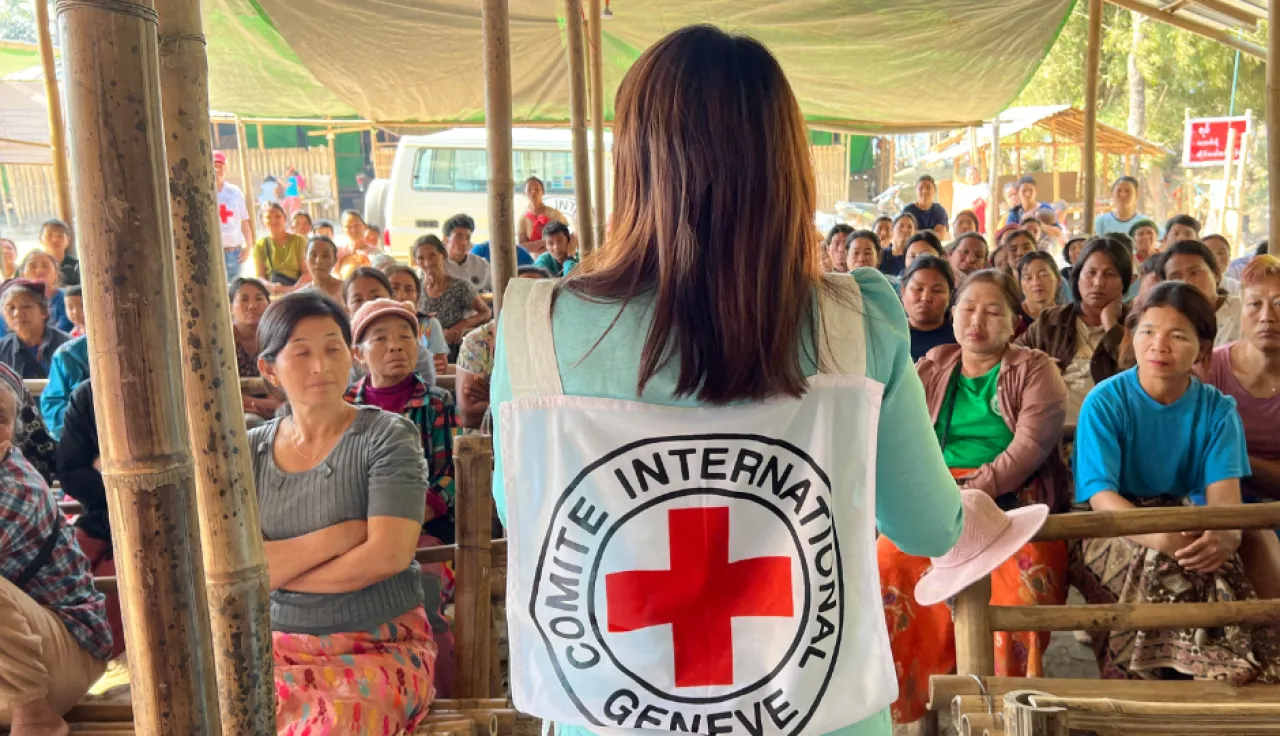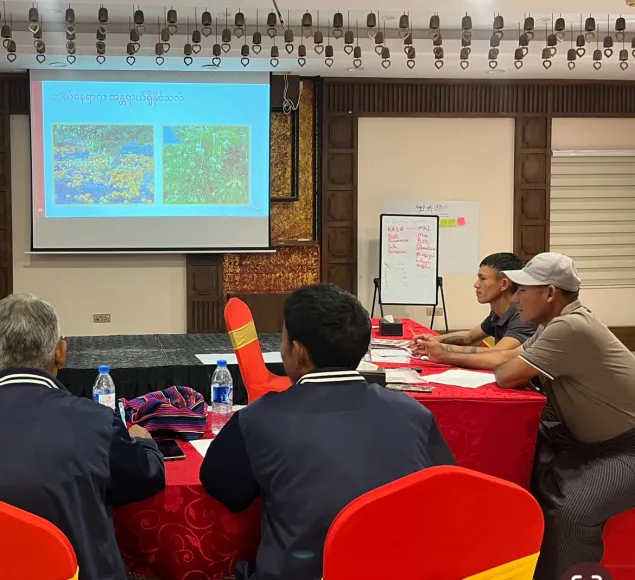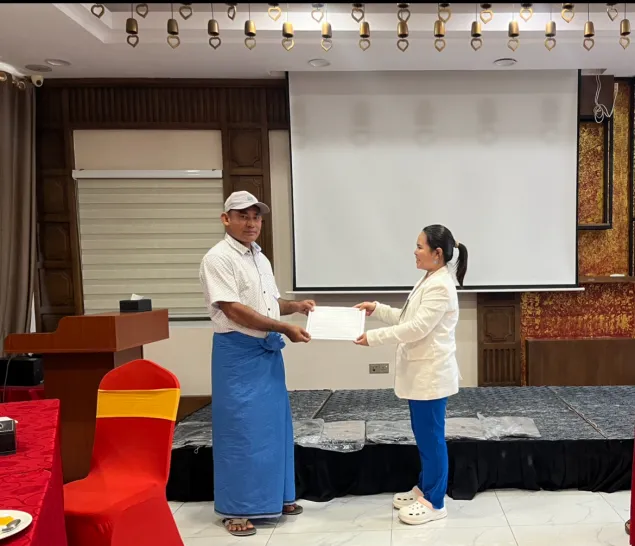Myanmar: Landmine awareness saves lives amid conflict and natural disasters

The International Day for Mine Awareness and Assistance in Mine Action, observed on 4 April, recognizes the successes of mine action and draws attention to the challenges that remain. In Myanmar, where armed conflict and other forms of violence have escalated significantly in the last 17 months, the humanitarian challenges that people face have been made worse now as they reel from the impact of the devastating earthquake that hit the country and its neighbouring regions on 28 March.
As people relocate to areas that are lesser impacted by the earthquake and local and international organizations plan their response, the risk of explosive remnants are posing a threat to life and the safe delivery of humanitarian relief.
The numbers underline the gravity of the situation. In 2023, for the first time, Myanmar had the highest annual number of civilian casualties caused by landmines, exceeding all other countries for that year, according to the most recent Landmine Monitor Report.
Raising awareness to save lives
Since 2015, the ICRC has partnered with the Myanmar Red Cross Society (MRCS) to raise awareness of explosive risks and promote safer practices in communities affected by conflict. These risk awareness and safer behaviour (RASB) activities provide lifesaving information to people and help reduce the chance of death or injury. In 2024, the ICRC and MRCS delivered over 1,800 RASB sessions in affected communities, reaching over 69,000 people.
McCann says the ICRC, MRCS and other partners have intensified risk awareness and safer behaviour messaging since the earthquake. “This is vital to ensure that people are able to recognize potential areas of contamination and how to stay safe as they move out of the areas affected by the earthquake,” he says.
U Toe, a farmer from the Mandalay region, is one of those who attended an RASB session we organized previously. U Toe’s home in Madaya Township, famous for the Taung Pyone Spirit Festival held every August, would host people from across the country. However, the area now faces severe humanitarian challenges, following the effects of explosives used during the ongoing conflict, exacerbated by the recent earthquake.

Relaying messages through community volunteers
U Toe went on to join a three-day training of trainer course for community volunteers that the ICRC delivered. The training course teaches participants how to give key safety messages to their communities, including how to recognize and avoid explosive devices and dangerous areas and the consequences of incidents. Trained community volunteers can deliver messages to people in areas where we do not have access, helping them to behave safely.

U Toe shares that in February 2025, some people in his community found an unexploded weapon in a field near their home and tried to dig it out. “As soon as I heard that people were trying to remove the object I explained to the village leader that touching these remnants of war is extremely dangerous.” The village leader warned the villagers not to touch the item and arranged for someone to place a warning sign nearby to prevent future incidents. “I am glad I could help protect the villagers by warning them in time,” says U Toe.
The increased presence of mines and explosives is now making it more important than ever to raise awareness in affected communities, explains Thinzar Oo, from the ICRC’s unit dealing with weapon contamination. “We share RASB messages with children, farmers, displaced people and others, and conduct awareness-raising activities in as many areas as we can access. For the areas we cannot access, training volunteers to help pass on information is a highly efficient approach,” she says.

On this International Day of Mine Awareness, the ICRC remains committed to continue training community members like U Toe across the country so that they can prevent and mitigate hazards. Since the devastating earthquake that hit last Friday, the ICRC, MRCS and our partners have been extensively sharing messages about risk awareness and safer behaviour to help affected people understand the additional danger of explosive ordnance and to stay safe.
Helping survivors rebuild lives
Explosive contamination in Myanmar has left thousands of survivors in need of long-term care, rehabilitation and livelihood support. The ICRC supports people living with disabilities through five physical rehabilitation centres in Myanmar, helping to increase their resilience and improve their quality of life. In 2024, more than 4,800 people with disabilities, including 1,818 people affected by explosive hazards, were supported through our physical rehabilitation services, an increase of more than 100 patients compared to 2023.
Learn more about our work in Myanmar
- Myanmar: ICRC raises awareness as rainy season poses higher risk of explosive devices
- Myanmar: Life disrupted by landmine injury, but dreams and will intact
- Myanmar: Hpa-An Orthopaedic Rehabilitation Centre marks 20 years
- Myanmar: Creating cartoons to raise awareness of explosive hazards
- Double jeopardy – during and after conflict: The human cost of weapon contamination in Asia-Pacific



